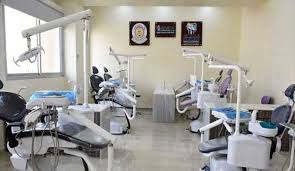“Digital culture” is an important step in the field of dentistry
10-January-2024
Damascus – Hiat Issa
Moving towards digital and virtual development is a very important step, after digital culture has become a very important event in all fields, especially in the medical field, and dentistry is one of these fields, given that it is a profession full of details and contains a lot of equipment, a large part of which has been incorporated into digital technology. Digital dentistry refers to any technology or device that can contain digital components that are an alternative to a previous or old traditional technology or device that relies on regular electrical or mechanical components.
Dean of the College of Dentistry, Dr. Khaldoun Darwish, stated in an interview with “Al-Baath” that there is an attempt to gradually introduce digital culture into the dental curriculum, as the college recently equipped the digital dentistry laboratory, which is a modern laboratory equipped with a seminar hall and a set of equipment related to digital technologies, such as a scanner. Endo-oral, 3D printer, and lathe devices; A weekly session was allocated for graduate students to attend a training session on digital dentistry and learn about the mechanism of operation of the devices and software related to it. Graduate students were encouraged to receive research on digital dentistry and complete it in the laboratory, in addition to conducting training courses and activities related to digital dentistry through doctors. Practicing dentists, and work was also done to introduce digital culture into the dental curriculum for university students, especially with the presence of a project to amend the study plan to suit the global digital development, with an emphasis on cooperation with private universities to receive postgraduate students to learn about the components of the digital laboratory and the mechanism of work. In it, as well as to learn about modern microscopic applications.
During his speech, Darwish also pointed out the most important digital applications being worked on at the college, an example of which is digital prints that previously relied on the traditional method using putty, which is annoying work, takes a lot of time, and can lose its accuracy if it is delayed in arriving. To the laboratory, it gives inaccurate results, but now it has been developed through the “digital print” through the “Skinner” device, which is a device that is connected to a computer that takes a series of images of the jaws connected to a computer that contains a program that matches the images to build a model of the patient’s jaw. Here, it is possible to repeat it more than once or correct the print by performing an additional scan. Note that the copy is a digital image saved on the computer that is easy to save and does not change or distort. Its dimensions are very precise and can be copied more than once. It is an example of digital developments, and the topic will not stop. In this space, digital technologies have entered into many matters in dentistry, as there are (the subject of modeling, 3D printing, digital archiving, remote dentistry based on software applied to mobile phones, artificial intelligence applications) and the subject is likely to develop further and wider. .
For his part, laboratory technician Hussam Al-Din Al-Tabbaa, an expert dental technician at the Digital Gateway Company in Syria, pointed out that the importance of working in the digital laboratory at the College of Dentistry lies in informing postgraduate students about the digital field that exists on the ground in many clinics and dental centers inside and outside the country. The student usually receives information in a theoretical way regarding his subjects, whether at the undergraduate level or the postgraduate level. The step of launching the digital laboratory was a kind of support for the university to introduce the digital field to the dental curriculum. The benefits of this step lie in the students’ view of the digital laboratory devices and the “cat cam” system. Which works to produce compensations in a digital way and benefit from it by completing their work for patients who are being treated in the laboratory and following up on all stages of the work, as well as viewing the samples and results of their work in all its details.
It is noteworthy that the digital laboratory provides cases of crowns, bridges, and prosthetics above implants, a guide to cutting gums, surgical guidance for implants, as well as clear braces, in addition to some facial or maxillary prostheses and complete prostheses.

